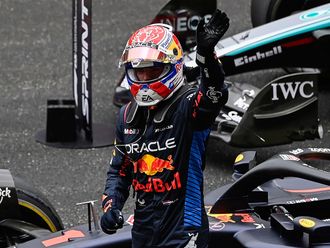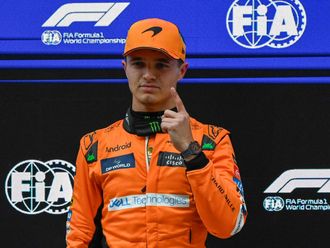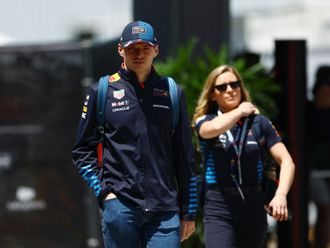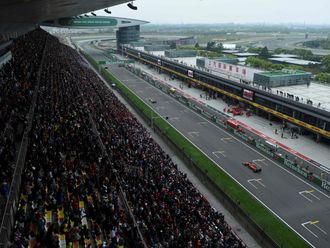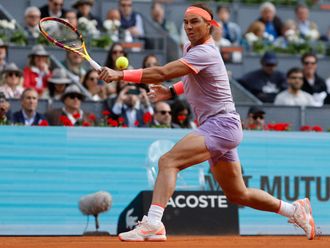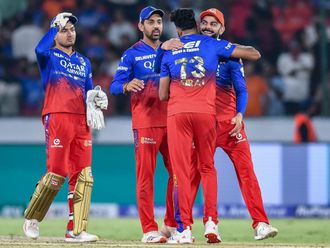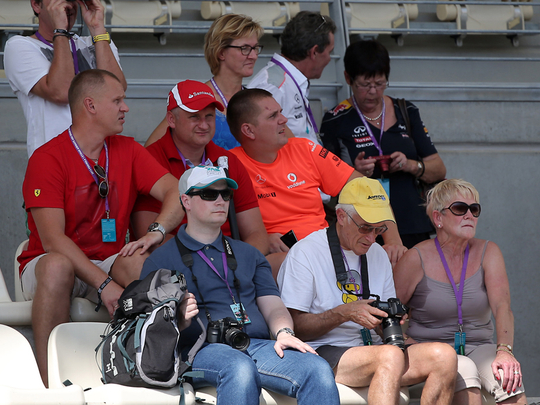
With so many things going on in our increasingly busy lives, keeping up with everything can be hysterically complicated. And because we are constantly stressing over currency exchange rates and Kim Kardashian’s wardrobe, we strive to find stress-free and enjoyable pastimes to help us escape the ghastliness of reality, if only for a few hours.
Most of us, invariably, opt to watch live sport to distract us from rising inflation and Greek bailouts. We don’t want to have to think about it, we don’t want to do maths, and we don’t want to have to consult Wikipedia every five minutes to refresh our memories of the rules.
Cricket is a great way to spend a few hours. Watching the batsman knock six of the best while sipping tea is both simple and engaging. Football too; watching 22 men chase an inflated animal bladder around a field isn’t very hard to grasp.
But then we come to Formula 1.
The fact of the matter is that contemporary Formula 1 is too complicated to attract new viewers. A motor race is considered to be a field of cars lining up on the grid, racing away at the lights with every driver giving his – or her - absolute all on the ragged edge until the chequered flag. This is essentially what we all want as fans. We want to see Hamilton take on Vettel, wheel-to-wheel, in a 90 minute raw-knuckle tussle resulting in split lips and scarred bodywork.
But, instead, we hear radio transmissions like “Ok Nico, drop three seconds back and follow until the first pit stop. We can jump him then”. Great, so Nico can’t get close to Lewis to race and in order for him to assume the lead Lewis must be sitting still in the pit lane. That’s not racing, that’s chess.
Formula 1 is, arguably, now more of a show than a sport. Nations use it to attract visitors, brands use it to sell hand soap, and teams use it to forge a living. No change there, that’s always been the way. But the complex by-product of all this in the modern world is that there are so many reputations on the line; the show can’t afford to be “boring”, ever.
We have the situation with tyres and fuel saving. Tyres that degrade quickly were supposed to “improve the show” by adding an element of unpredictability, but to get round this the teams just tell the drivers to slow down. Fuel levels are set before each Grand Prix, which at the moment is not enough to complete an entire race distance, so again, drivers have to slow down to ensure they finish. And while the idea behind this is to force the manufactures to make more fuel-efficient engines, how are the fans supposed to know? And why should they care?
Then we have the bolt-on aids like DRS and ERS. For one thing, Formula 1 has too many acronyms, and no would-be-new-fan who has stumbled across a GP while channel surfing is going to have the foggiest what it all means. The DRS – Drag Reduction System - is welcome, but how is Johnny New-Fan going to know that it can only be used at certain points around a race track? “Why can’t he just use it everywhere?” he’ll cry, if he’s even worked out what it is.
Whether it is artificial racing or not remains debatable.
Yet still…
Let’s not forget that since Formula 1 came into being as a series in 1950, it has always been at the forefront of automotive innovation. From chassis and body design and new, stronger materials to tyre technology and driving aids, Formula 1 has always done the groundwork for the road car industry.
But we’ve reached a point now where things are pretty good safety-wise (although there is always room for improvement). You only have to look at some of the crashes that drivers have walked away from over the last decade to realise that. So is Formula 1 still the right place to show off and champion all this wonderfully expensive space-age technology, considering that it makes the sport more complicated and is thus a turn-off for the (new) fans?
Big manufacturers such as Volkswagen (parent of Audi and Porsche), Toyota and Nissan are more interested in sports car racing as it is more relevant to their road car projects. Formula 1 boasts only Ferrari, who exist primarily for Formula 1, Mercedes, who also run sports cars series, Renault, who are committed to the sport one minute but pulling out the next, and Honda… who have an unstable record of sticking with things.
Formula 1 is one of the world’s most-watched sports, with literally hundreds of millions tuning each race, a fine hook for sponsors indeed. But what is the point if new fans are being turned away because they haven’t a clue what’s going on, and the old fans getting ever more frustrated with “artificial racing”?
It’s a conundrum: In order to draw in the manufacturers, the technology has to be relevant. This inevitably leads to a more complex set of rules. But then to draw in new fans – and thus new sponsors - the rules need to be (relatively) straightforward without upsetting the existing, long-term fans (who are often forgotten). We’re not talking about dumbing down the rules, but there must surely be a happy medium.
I’m sorry to have taken you through a thousand words and not been able to offer a solution. Let’s just sit down and try to enjoy this weekend’s Austrian Grand Prix. Get your friends to watch it too.


